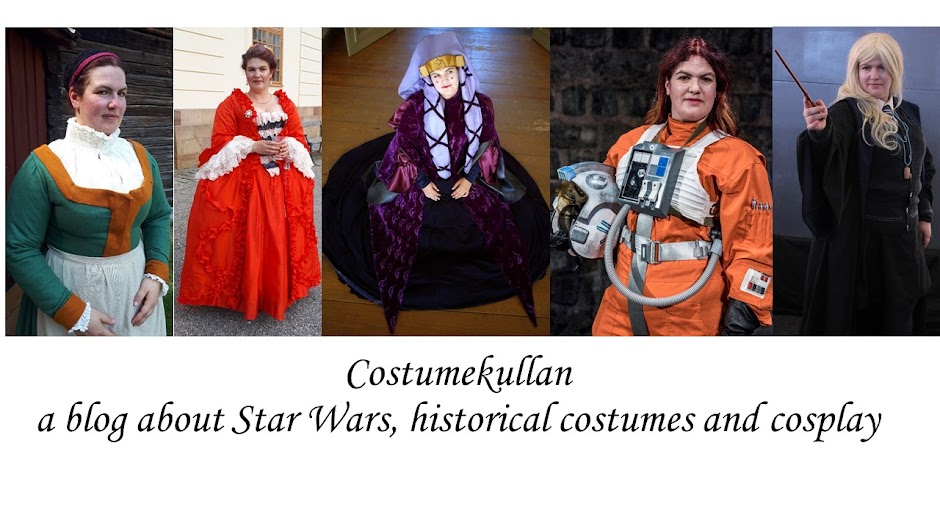Winter is coming, and I need something to wear with my 16th century clothes. I decided to make a longer gollar, than my short red one. I wanted a gollar, or cape, that covered the whole upper body, and I wanted to line it with fur to make it really warm and cozy. I started to look around auction sites and second hand stores for some old furcoats that I could use for lining. I don't mind wearing fur if it's old or antique, but I don't want to buy new fur and encourage the fur industry. I didn't find anything, but I still needed the cape, so I decided to start with it anyway. For the wool outside I picked a new melton wool, which is lately felted. It's from Medeltidsmode. The fabric arrived, I cut it out, and then I forgot that I had made a bid on a mink coat on an auction site and got really surprised when I got the mail that I had won the auction. I got it dirt cheap.

The pattern for the cape is fairly simple, I have gotten it from
Marlein. It's a half circle for the back piece, and the front is basically a quarter circle cut in half, so you get two 8th of a circle. There is an opening in the seam between the fronts and the back piece, so you can stick your hands out through it.
To reuse a furcoat isn't totally easy. First I had to remove the two layers of lining, and then cut it up into pieces that were as large as possible, basically most of the fronts and the back piece. I decided to use the largest pieces of fur for the front, where they might be visible. And tht is what you can see in the photo above.
Then I got a lot of small pieces and scraps. I was worried that there wouldn't be enough fur to line the whole cape. But I put everything out and from what I can see there should be enough fur to fully line it. I still haven't cut up the sleeves, I'm first of all planning on using them for the collar, and then as reserve pieces if I can't cover the whole inside of the cape. If you are taller than me, or want a longer cape, you might need two furcoats or a furcoat and some extra pieces.
I started with attaching the front pieces and then the biggest pieces in the back. I'm using silk thread, and big stitchies, to make as little strucural damage to the fur as possible. I sew the pieces on by hand, and I pull the thread through part of the wool, but not all the way to the other side. The seams are not toally invisible, but the there is no thread visible on the front. This would probably have been easier if I had used a dark fabri and a thread in a similar colour.
Despite trying my best to pin everything in place I noticed that the outer fabric had gotten all these folds, it had obviously moved when I sewed the large piee of fur on. The solution was to rip up the seam fixing the fur to the wool at the neck opening and then stretch the wool upwards to get rid of the wrinkles at the bottom.
I also made sure to do this when the cape was hanging on my dressform, to mae sure that the fabric was hanging like it would when I wear it. In the photo above you can see the difference from before.
This is how much I had to stretch the wool, from the start the fur was sewn on just 0,5 cm from the edge of the wool. This doesn't matter since I will be able to over it with the fur from the collar when I sew it on.
I still haven't gotten the inside fully covered in fur, but the next step is to make the collar and line that with fur, so that I then know exactly how much fur I will have left.













